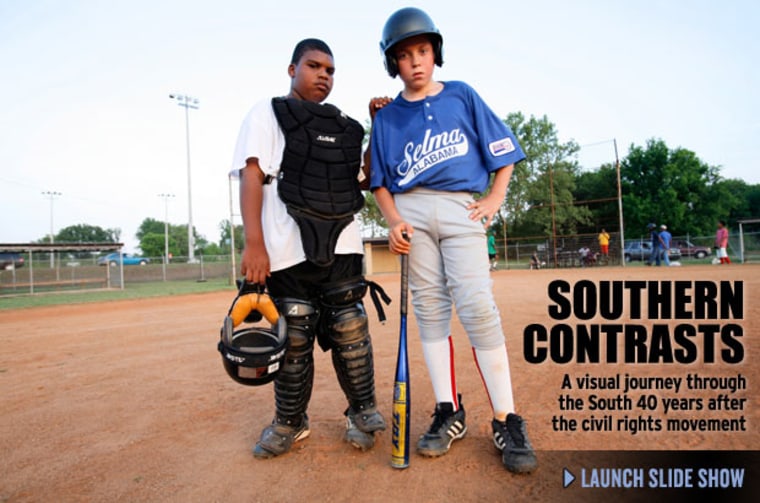Photojournalist David Turnley took a six-week trip, over 8,000 miles, through the back roads of Georgia, Mississippi, Alabama and Louisiana, to photograph life in the South, the better to grasp and to try to show how far the United States has come 40 years after the high-water mark of the civil rights movement.
Turnley was dismayed to discover the ways in which the South is still “separate” and how the notion of “equal” is subject to wide interpretation. “Most Southern towns are still divided by the literal and figurative railroad track,” Turnley writes. “Following the American Bill of Rights, and a mandate to desegregate schools in the mid-1960s, many white families throughout the South came together to build private schools where they send their children.
“Many will tell you that this has created a de-facto segregation, public and private, that entrenched in the schools more than before. Most Southern towns still have country clubs with constituents that vote to keep out blacks and Jews.”
The separation, Turnley notes, extends to the churches.
What has changed from the ’60’s is the representation of blacks in positions of government, including their election and appointment as mayors, school superintendents and chiefs of police — some of the more pivotal everyday points of contact with government.
Agriculture has become almost entirely mechanized, and manufacturing has shifted largely to urban centers or overseas, leaving rural Southerners, many of them black, as so many intruders in the dust.
The region is faced with serious challenges of unemployment, poverty and crime. But Turnley notes the persistence of the graciousness and good humor that also typify the Southern experience.
The photographs and journal you are about to experience are from 10,000 images and dozens of interviews from Turnley’s journey. MSNBC.com is proud to present them on this, the 39th anniversary of the assassination of the Rev. Dr. Martin Luther King Jr. — an event that starkly distilled the contrasts of blacks and whites not just in the South, but in all of America.
